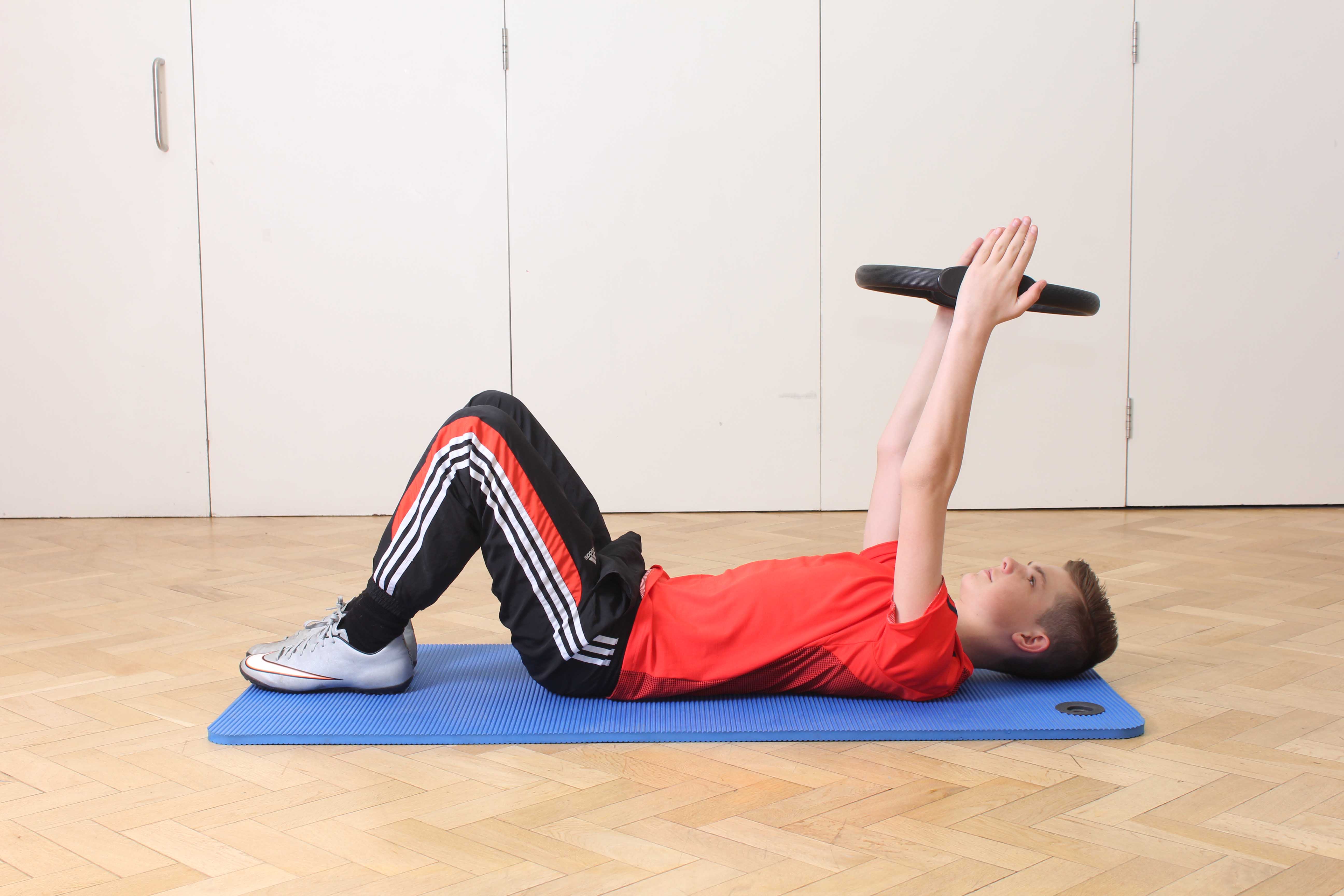What is scoliosis?
Scoliosis in children is an abnormal curvature of the spine. Scoliosis can be a C-shaped or S-shaped. Scoliosis in children can cause pain, stiffness and difficulty breathing. Signs of scoliosis in children may include:
- One shoulder blade is higher than the other
- One hip is more higher and more prominent than the other
- The ribcage is more prominent on one side
- Your child leans to one side
 Above: Postural realignment by an experienced paediatric physiotherapist
Above: Postural realignment by an experienced paediatric physiotherapistTypes of scoliosis
The three types of scoliosis in children include:
- Infantile Scoliosis which occurs before the age of three
- Juvenile Scoliosis occurs in children aged between the age of 3 and 10
- Adolescent Idiopathic Scoliosis (AIS) which occurs between the age of 10 and 14
- Postural scoliosis –usually occurs secondary to other problems, such as muscle imbalance, or a hip tilt (often due to a shorter leg) and can be corrected by positioning or stretching exercises.
- Fixed scoliosis – means that the curvature of the spine is permanent and occurs due to deformities in the bones themselves. A fixed curve cannot be straightened by positioning.
 Above: Sretches and realignment exercises for the back
Above: Sretches and realignment exercises for the backConservative treatment for scoliosis
Physiotherapy treatment for scoliosis will help maintain movement and flexibility of your child's spine, reduce pain and maximise function. At Physio.co.uk our specialised paediatric physiotherapists will help your child manage their symptoms so that they can continue to enjoy activities at home or at school with friends and family.
Physiotherapy may involve:
- Exercises to strengthen the supporting muscles of the spine and correct muscle imbalance.
- Correcting and varying posture and advice on positioning to reduce pain and increase comfort.
- Muscle stretching to lengthen tight muscles and relieve pain.
- Exercises based around functional activities to enhance independence at home or at school.
- Hydrotherapy treatment.
Lycra suits – These suits are made of lycra and cover the whole body to help maintain or reduce the curve of the spine and help improve hip position and trunk stability.
Surgery for scoliosis
In severe cases need some children may require surgical correction which may involve fusion of the vertebrae (bones in the spine) and fixing it together with rods, hook or screws to keep the spine straight.
Physiotherapy following surgery
At Physio.co.uk we provide comprehensive assessment and treatment for children following spinal surgery. It is important to commence physiotherapy treatment as soon as possible following the surgery for the best possible recovery. Our paediatric physiotherapist at Physio.co.uk will help rebuild your child’s strength and flexibility and improve posture in a safe and effective way so they can continue with the activities they enjoy at home or at school. Physiotherapy treatment will be focused on:
- Relieving pain and swelling
- Restoring and maintaining range of movement
- Increasing muscle strength
- Improving posture
- Increasing comfort
- Enhancing independence with everyday activities
- Improving quality of life
- Ice application to relive pain in the initial stages of recovery.
- Advice about certain positions of the spine and movement while your child’s back is still healing.
- Stretching exercises to improve flexibility of the lower back, trunk and neck and reduce pain.
- Range of movement exercises such as bending, straightening and rotating the back.
- Exercises to strengthen the core muscles which will be fun and tailored to your child.
- Hydrotherapy once the wound has healed.
For more information or to book an appointment please call 0330 088 7800, or book online today!

 0330 088 7800
0330 088 7800


































